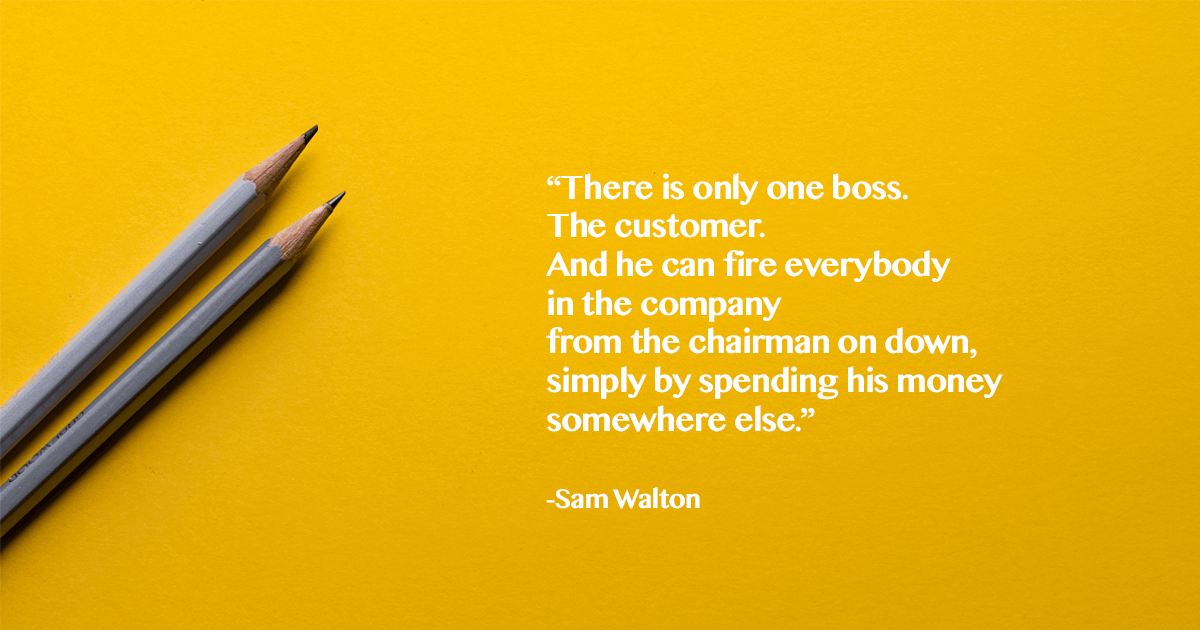Wonder what’s the new jargon that everyone seems to be throwing around these days? No worries, we’ve got you covered! Here’s everything you need to know about Customer Effort Score, or CES as everyone fondly calls it.
Customer Effort Score is one of the most popular customer satisfaction survey methodologies used to measure how satisfied your customers are with your products/services and offering. What does Customer Effort Score measure? It measures the ease of experience for a customer with a company.
A typical CES survey would look like this:
How easy was the experience of working with X brand?
Very Difficult | Difficult | Neutral | Easy | Very Easy
We already have CSAT and NPS. What’s new about CES?
There are two other major metrics that are used to measure customer satisfaction: Customer Satisfaction Score (CSAT) and Net Promoter Score (NPS). In CSAT surveys, a customer has to express their satisfaction on a score of 1-5. NPS which was introduced in 2003 focuses on measuring customer loyalty and the long-term happiness of a customer with the brand. NPS is regarded to be a better metric than CSAT as it predicts customer behavior.
However, Customer Effort Score (CES) takes a slightly different approach where it asks the effort a customer had to take in interactions with the brand. Intriguing, right? Read on!
“CES is 1.8x more predictive of customer loyalty than customer satisfaction (CSAT) measures, plus it is two times more predictive than Net Promoter Score (NPS).”
-Gartner
With Customer Effort Score, the customer will choose any one of the above options based on their experience with the company. Although many articles and journals might say that you need to exceed the expectations of your customer to keep them satisfied, but all you need to do initially is make their experience as seamless as possible for them. Solve the issues of your customers quickly and that too without any hassle. The little things matter, something as simple as responding immediately to a query will keep you in good stead with the average customer.
How do You Calculate Customer Effort Score?
These surveys are taken after a short interaction with the customer with the brand. The survey usually constitutes a simple statement that is asked as a question. The question (read survey) is usually followed by options ranging from ‘Strongly Agree’ to ‘Strongly Disagree’ with variations in between. There are simple ‘Yes/No’ questions in a CES survey as well. Companies measure CES while finding out other customer success metrics like Customer Satisfaction (CSAT), Net Promoter Score (NPS) and other metrics that help to gauge the level of satisfaction of the customer.

How to Conduct CES to Measure Your Customer’s Effort Levels
Customer Effort Score is an indicator of customer effort and loyalty. It says that customers are loyal when their experience is smooth and that there is not much to lose if you cannot exceed the expectations of the customer but you stand to lose a lot when you disappoint them.
Below are the four steps to conduct CES:
1. Use the Right Words
CEB used a combination of different possible Customer Effort Score questions to almost 50,000 customers from different verticals and geographies. There was a single word combination which predicted customer loyalty better by 25%. The question was as below:
“To what extent do you agree with the following statement: The company made it easy for me to handle my issue.”
The original CES question formulated in its inception was this: “How much effort did you personally have to put forth to handle your request?”
Here is how a good Customer Effort Score question should be posed:
- Should be in a Likert format. Easy to ask and conceive.
- The question should be asked in a simple format where you don’t use any jargons.
- Question is expected to be neutral.
- It could be about a single point of experience or the overall experience.
- Can be extrapolated and used as a standard to compare against other metrics.

The above four are just examples of how you can formulate a CES question, you should customize it according to what you want to analyze and target them appropriately. But do not change the structure of the format too much lest your customers are confused about the question entirely.
2. Ask at the Right Time
The perfect moment for you to ask a CES question is when your customer has just had an interaction with you. Once the question is posed immediately, there are high chances that you get an unbiased answer because the memory of the experience is fresh. Asking the CES question after a day or two doesn’t do any good for you.
You can ask a CES question at different points of interaction including when the customer gets done with a live chat on your website, when they are about to quit your website, after an email or a phone interaction- and much more. There are many tools using which you can ask the CES questions.
3. Choosing the Scale Value
The first question that was used as a part of CES had a scale of 1 to 5 in which 1 meant good and 5 meant bad. There was a flaw to such thinking because people associate a higher score with a favorable outcome. The CES 2.0 came up with a 7-point scale whose choices ranged from 1 (strongly disagree) to 7 (strongly agree).
The best part about a 7-point scale is that it allows more options than the arbitrary 5-point scale.
Analyzing Customer Effort Score Results

CEB says that a customer’s loyalty increases by 22% if you can move them from 1 to 5 on a 7-point scale while there is only a 2% increase if you manage to improve it to 7 from 5. Following up with a customer is always a sure-shot way for you to improve the relationship.
The next step is for you to work on improving the CES by analyzing the results. Get in touch with the customer over a call or send them an email to make things right.
What Is So Special about Customer Effort Score?
This metric has been used widely and it is only increasing in prominence while a few other metrics are slowly being sidelined. While a metric like NPS only asks the customer how likely are they to recommend the brand to their friends and family, CES asks if they had to put a lot of effort in dealing with the brand. There is no misrepresentation that could possibly occur as the question posed is extremely simple and easy to understand and respond.
The Customer Effort Score is gaining attention as the point is to find out how much effort a customer takes when dealing with a brand. The lesser the effort a customer has to take, the better it is for your brand. Things like web usability, user experience, and navigation ability, all of which concentrate on improving the experience of the customer.
In this day and age when there are cases of huge digital transformation happening with all kinds of companies for multiple processes, it unfortunately so happens that customer experience and serving the customer properly is not taken care of at all.
What is Considered a Good Customer Effort Score?
All said and done, what is a good enough CES? There cannot be an arbitrary reliable number that you can use as a benchmark for the CES score. The lower the score is, the chances of a customer staying with you are increased multi-fold. A CES score of less than 5 can be construed as a bad score and it is wise to use it as an opportunity to deliver better customer experience.

Advantages of using Customer Effort Score
- CEB says that Customer Effort Score outperforms both NPS and CSAT in predicting the future spending behavior of a customer.
- CES also highlights who will switch to a competitor.
- It allows you to find out weaknesses at each customer touchpoint.
- It helps predict loyalty and can also see if the customer will purchase from you again. It is much less volatile than the other metrics that are used.
- The CES model can be used at any point in time during the customer lifecycle (or read sales life cycle). Therefore, it is easy for you to take corrective action at regular intervals.
- This model lays a foundation to weed out customer issues and helps build loyalty and trust.
- High effort equals low customer loyalty and CES helps you take care of this.
- Use CES as a KPI in your business to measure metrics such as customer satisfaction, customer loyalty and in empowering employees.
- Chart each customer interaction where you find the CES score, see if there are areas where the experience can be improved and monitor the CES score for each of these interactions.
- The fact that it is a short survey helps you get more responses for it.
Disadvantages of Using CES as a Metric
- It cannot help you identify the difficulties that customers face
- Factors like cost, quality of the product, level of service and competitors are not taken into account. These factors are completely ignored which may result in a different score than what it should have been in the first place
- CES does not give you information about the overall relationship of the customer with the company, it only shows what works at a transactional level
- Does not allow you to segment the results based on the type of customer
- It can address only obstacles that a customer faces but doesn’t say how or why a certain issue is caused
Bottomline
Customer Effort Score has garnered a lot of attention over time and rightly so, it has a lot of potential in understanding the experience of the customer. It helps to add a lot of value to a Customer Experience Measurement Program that will help the end consumer. Organizations should take the call on how they can go ahead with using a CES score and how to work around it.
While CES is a framework that helps and understand the effort a customer puts in when doing business with you, it is also at a slight disadvantage because it talks only about one part of the customer experience. It does not take into account factors like the price of the product, quality, and other factors.
Just finding out the CES does not translate into good business values and actions. Being satisfied with the number will not keep your customers satisfied. You need to look at patterns and the survey responses to arrive at a knowledgeable conclusion.






